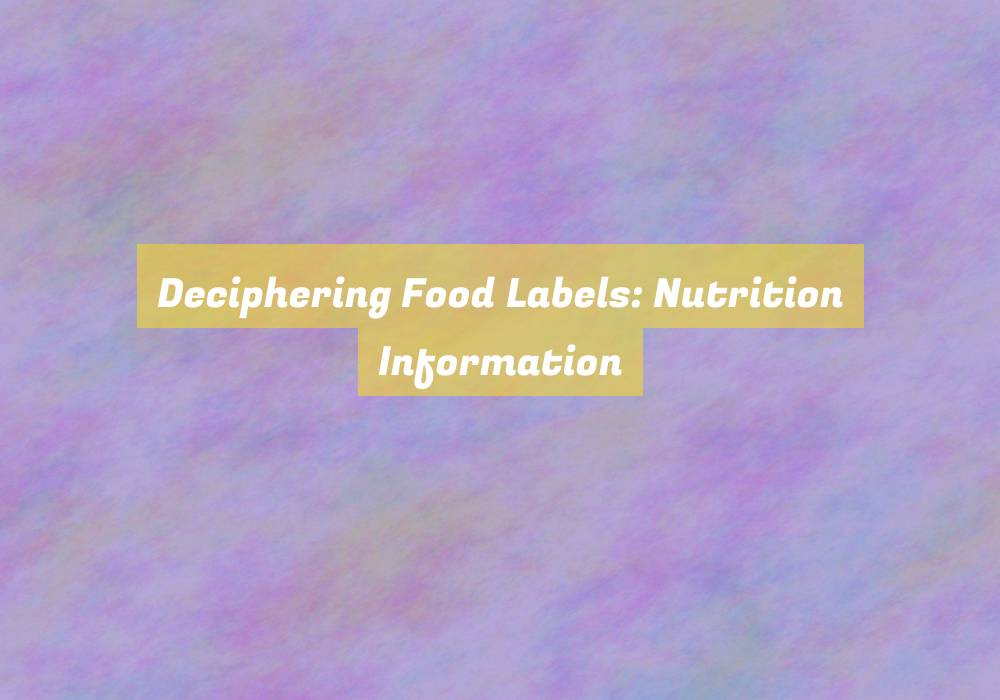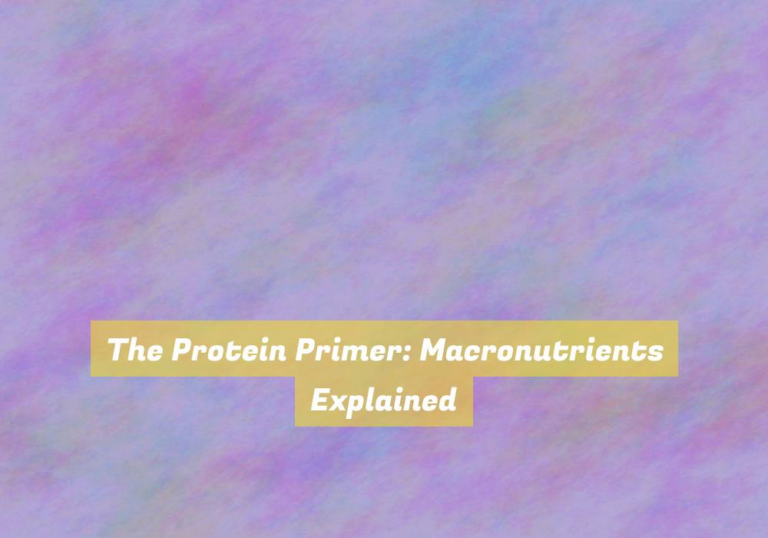Deciphering Food Labels: Nutrition Information
You may not be aware that food labels can be a lot more revealing than you might think. Understanding the nutrition information on food labels can be a game-changer when it comes to making informed choices about what you eat.
From deciphering serving sizes to identifying hidden sugars, thereG??s a lot to unpack when it comes to nutrition labels.
Stick with us to uncover the secrets behind those tiny numbers and percentages and learn how to make the best choices for your health.
Understanding Serving Sizes
Understanding serving sizes is crucial for accurately assessing the nutritional content of the food you consume. When you look at a food label, the serving size is the first thing you should check. It tells you the amount of food that the nutrition information is based on.
Sometimes, the serving size listed on the label may be different from the portion you actually eat. This can lead to confusion and can cause you to underestimate the amount of nutrients, such as calories or sugars, youG??re consuming.
By understanding the serving size, you can better gauge your intake of nutrients and make informed decisions about your diet.
Pay attention to how many servings are in the package as well. If a package contains multiple servings but you consume the entire thing, you need to multiply the nutrient values by the number of servings you actually ate. This simple step can make a significant difference in how you interpret the nutritional value of the food youG??re consuming.
Decoding Nutrient Percentages
To accurately interpret the nutritional value of a food item, pay attention to the nutrient percentages listed on the food label. These percentages provide valuable information about the contribution of specific nutrients to your daily diet.
When decoding nutrient percentages, focus on the following key points. First, consider the context of the percentage. Is it based on a standard 2,000-calorie diet or a 2,500-calorie diet? This is important because your individual calorie needs may be different.
Second, assess the percentage in relation to the recommended daily intake. For instance, if a food item contains 20% of the daily value for fiber, it contributes significantly to your daily fiber intake. Conversely, if it contains 5% of the daily value for saturated fat, itG??s relatively low.
Lastly, be mindful of nutrients you should limit, such as sodium and saturated fat. Keep an eye on the percentages of these nutrients, aiming to consume them in moderation.
Identifying Hidden Sugars
When assessing food labels, pay attention to hidden sugars, as they can significantly impact your overall daily sugar intake and affect your health. Sometimes, sugars are listed under different names such as high fructose corn syrup, dextrose, maltose, or fruit juice concentrate. These hidden sugars can add up quickly, contributing to weight gain, increased risk of heart disease, and other health issues.
Keep in mind that ingredients are listed by weight, so the higher up on the list a sugar is, the more the product contains. Also, be wary of products labeled as G??low-fatG?? or G??fat-free,G?? as they may contain added sugars to enhance flavor. To identify hidden sugars, check the nutrition label for the G??sugarsG?? section and the ingredients list for any synonyms of sugar.
Choosing whole foods over processed ones can also help reduce hidden sugar intake. By being mindful of hidden sugars, you can make more informed decisions about the foods you consume and better manage your sugar intake for improved overall health.
Unveiling Ingredient Lists
To uncover hidden sugars and make informed food choices, examine the ingredient list to identify any synonyms or alternate names for sugar. When reading ingredient lists, keep an eye out for terms like high fructose corn syrup, cane sugar, dextrose, fructose, glucose, maltose, and sucrose, as these are all different names for added sugars.
Additionally, watch for ingredients ending in G??ose,G?? as this is often a sign of a sugar compound. Be cautious of alternative sweeteners such as honey, agave nectar, and maple syrup, which while natural, still contribute to your overall sugar intake. Furthermore, look for ingredients like molasses, fruit juice concentrates, and syrups, as these are also forms of added sugars.
By familiarizing yourself with these various names for sugar, you can better assess the true sugar content of a product and make more conscious decisions about your food purchases. Remember, the higher up on the ingredients list these terms appear, the more the product contains.
Taking the time to decode ingredient lists empowers you to take control of your sugar intake and make healthier choices.
Conclusion
Now that you can decipher food labels, you can make more informed choices about the foods you eat.
By understanding serving sizes, nutrient percentages, hidden sugars, and ingredient lists, you can take control of your health and make better decisions for you and your family.
Keep reading labels and applying this knowledge to your everyday shopping and meal planning.
Your body will thank you for it!






